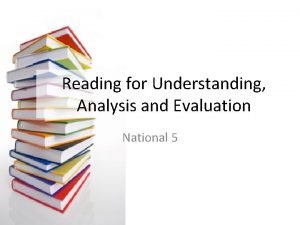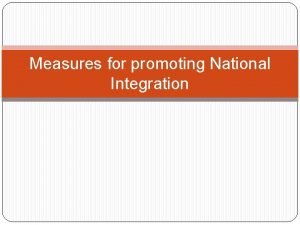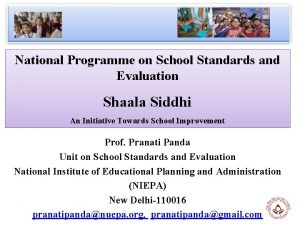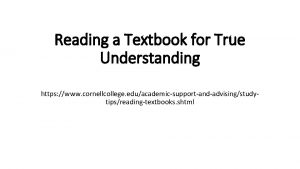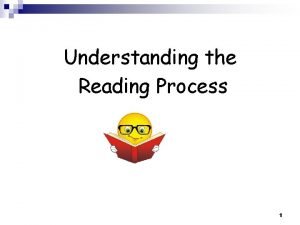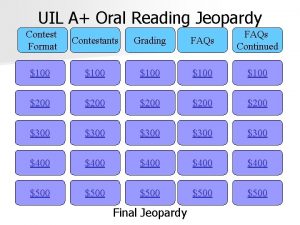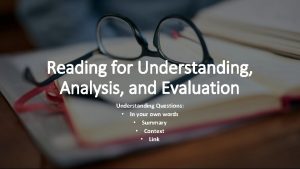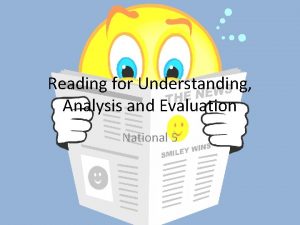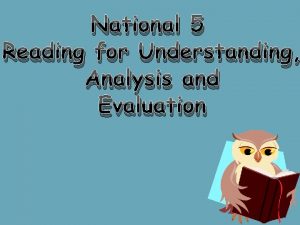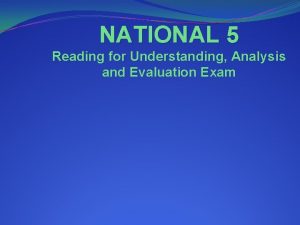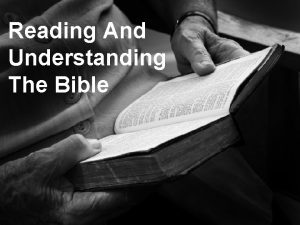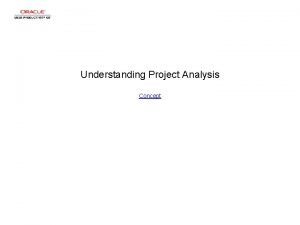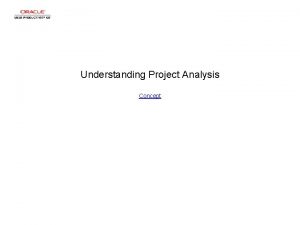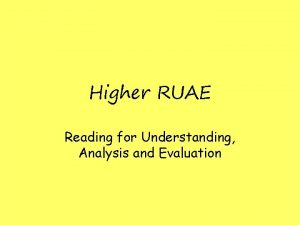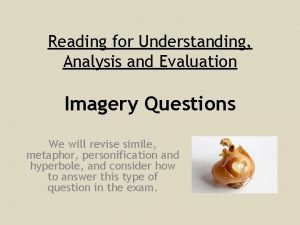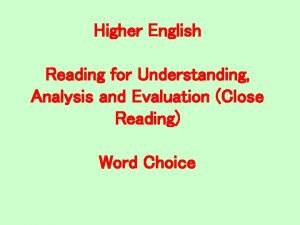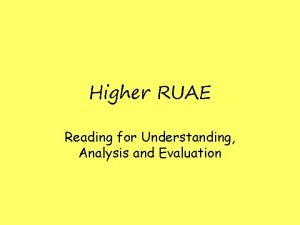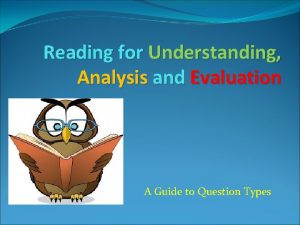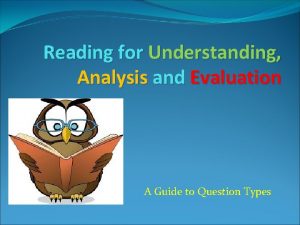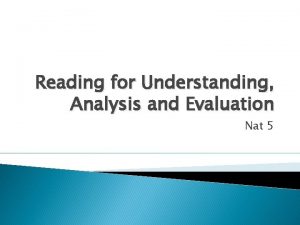National 5 Reading for Understanding Analysis and Evaluation



























- Slides: 27

National 5 Reading for Understanding, Analysis and Evaluation Formulas

What happens in the Exam? You will be given an non-fiction passage. You will have 1 hour to read the passage and answer 30 marks worth of questions about it. Each question will be worth 2, 3, or 4 marks. The exam tests your ability to understand the writer’s ideas, and to analyse and evaluate the language he/she uses to put those ideas across.

Using your own words Many of the exam questions will ask you to use your own words. You may have to: Explain what a word or expression in the passage means. Explain the main point the writer is making. Give the reason for something that happens in the passage. Show that you understand a piece of information the passage gives.

Context questions You may be asked to work out from the context what a word or expression means. The examiners think that you may not know the given word, but that you should be able to work it out from what surrounds it in the passage.

Context questions cont. Context questions might be worded like this: Explain in your own words what is meant by ‘_____’ in this context. How does the context of lines xx_xx help you to work out what is meant by ‘____? Work out from the context what is meant by ‘____’ in line xx.

Context question formula Context questions are usually worth 2 marks. You earn 1 mark for showing what the word means, and the second for showing how you could work this out from the context. Use this formula to structure your answers: The word/expression ‘_____’ as used here means ______. I can work this from the context because…

Word Choice questions When we talk about word choice as a technique, we mean that certain words are deliberately chosen to obtain particular effects or to suggest particular meanings. Most words have 2 levels of meaning – a denotation and more complex connotation. Denotation is the literal meaning Connotation are the ideas that a word suggests to us

Word Choice questions cont. ‘ate’, ‘gobbled’ and ‘nibbled’ all have the same denotation – someone consumed food by putting it in his mouth. However, they all have different connotations. ‘ate’ is merely factual; ‘gobbled’ suggests either desperate hunger, selfish greed or poor-quality table manners; ‘nibbled’ implies that person ate delicately or nervously

Answering Word Choice questions When you answer word-choice questions, you will need to identify and quote the carefully chosen words the writer uses, then explain and examine their connotations.

Imagery questions Imagery shows that one thing is somehow like another. The comparison tells us more about the thing that is being compared. Similes, metaphors and personification are all different sorts of image.

Imagery questions example I could describe myself as: Miss Tweedie, that educational hamster. Answer: Just as a hamster is small and brown, and scampers around squeaking, so Miss Tweedie is a tiny woman with chestnut hair, who constantly scurries around her classroom talking all the time.

Imagery questions method You begin with what the image literally is like, or literally means. Then you go on to the metaphorical meaning, showing how that image applies to and adds meaning to the subject under discussion.

Imagery questions formula Use this structure for your analysis in imagery questions: Just as …(explain the literal meaning), so … (explain the metaphorical meaning).

Link questions often ask you to say how a sentence creates an effective link between one paragraph and another. These questions are usually worth 2 marks and you usually need to answer them in two parts

Link questions cont. Two part answer: Show one part of the sentence links back to the previous paragraph. Show another part of it refers forward to the new paragraph.

Link question formula This formula should ensure you always get 2 marks for this question: The word/expression ‘_____’ links back to ______, which was discussed in paragraph ____. The word/expression ‘______’ introduces the idea of ______, which is going to be discussed in paragraph ____.

Tone questions It is easy to understand what we mean by tone if we think of a speaking voice. When you hear someone speaking, you can tell if he/she is angry, confused, excited or afraid. Skilled writers can create a tone by word choice alone.

Tone questions cont. The wording of tone questions can vary. Depending how the question is expressed, you will probably have to do a mixture of the following: 1. Identify a tone. 2. Quote words which create that tone. 3. Explain how the words you have quoted create the tone.

Tone question example passage ‘Twins poo at the same time, who knew? But you have to prioritise the toddlers who are using a loo, as they seem to have some auto-suggestion and need to go as soon as they smell anything that reminds them of a loo. Building in some time to lose track of what you were doing, I’d put this job at an hour, from poo-alert to the second twin getting a fresh nappy. ’

Tone questions example cont. Possible question for passage: How does the writer establish a tone of surprise in the passage? Answer: She does so by stating a surprising fact: ‘Twins poo at the same time. ’ She also adds a rhetorical question: ‘who knew? ’ to point out that the fact is unexpected.

Sentence Structure questions Sentence structure is how a sentence is made and built up. Structure is not the same as content. For example, the structure of your schoolbag might be canvas, stitched together and attached with leather straps and metal buckles – its contents would probably include books, pens and your i. Pod.

Sentence Structure techniques Length: look at whether a sentence is noticeably long, or short, especially if its length contrasts with the length of other sentences nearby Listing: what is being listed and what does this list suggest? Repetition: what is being repeated, and what does this repetition suggest?

Sentence Structure techniques cont. Parenthesis: what is the extra information inside the parenthesis about and what is the effect of this? (Parenthesis may be information within brackets or dashes. ) Word order: have any words been put in a position in the sentence that particularly creates emphasis? Colons or semicolons: what do these divide the sentence into? What do colons introduce?

Sentence Structure techniques cont. Minor sentence: these ungrammatical (usually short) sentences are used to create some kind of impact, so what impact is it? Questions: what is the effect of these on the reader?

Sentence Structure example passage ‘Your apartment is an electronic orchestra and you are the conductor. With simple flicks of the wrist and spoken instructions, you can control temperature, humidity, ambient music and lighting. You are able to skin through the day’s news on translucent screens while a freshly cleaned suit is retrieved form your automated closet. You head to the kitchen for breakfast and the translucent news display follows, as a projected hologram hovering just in front of you. ’

Sentence Structure example question How does the sentence structure of this paragraph contribute to a conversational tone throughout? Answer: The writer’s repeatedly use ‘you’ or ‘your’ at the start of sentences. This creates the impression that they are talking directly to the reader.

Bibliography Cooper, J. , 2014, ‘National 4 & 5 English’.
 Reading for understanding analysis and evaluation
Reading for understanding analysis and evaluation While reading activities
While reading activities Need of national integration
Need of national integration National programme on school standards and evaluation
National programme on school standards and evaluation Reading a textbook for true understanding
Reading a textbook for true understanding Understanding the reading process
Understanding the reading process Understanding standards national 5 pe
Understanding standards national 5 pe National 5 understanding standards
National 5 understanding standards Oral reading uil
Oral reading uil Difference between silent reading and reading aloud
Difference between silent reading and reading aloud Types of reading skill
Types of reading skill Real definition of extensive reading
Real definition of extensive reading Intensive and extensive reading
Intensive and extensive reading Developing effective reading skills
Developing effective reading skills National unification and the national state
National unification and the national state Kontinuitetshantering
Kontinuitetshantering Typiska drag för en novell
Typiska drag för en novell Tack för att ni lyssnade bild
Tack för att ni lyssnade bild Vad står k.r.å.k.a.n för
Vad står k.r.å.k.a.n för Shingelfrisyren
Shingelfrisyren En lathund för arbete med kontinuitetshantering
En lathund för arbete med kontinuitetshantering Särskild löneskatt för pensionskostnader
Särskild löneskatt för pensionskostnader Personlig tidbok
Personlig tidbok Anatomi organ reproduksi
Anatomi organ reproduksi Förklara densitet för barn
Förklara densitet för barn Datorkunskap för nybörjare
Datorkunskap för nybörjare Tack för att ni lyssnade bild
Tack för att ni lyssnade bild Att skriva debattartikel
Att skriva debattartikel
